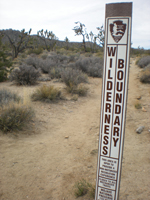I guess one thing that confuses me around here sometimes (while I am doing my research)......
In the thread about the Rubicon trail closing many of the same people who in this thread are happy to see areas closed said that closing the Rubicon is a bad thing.
Is not protecting wildlife & nature the same regardless of how famous an area is?
Lance, to answer that question I'll turn it around on you. If you're concerned about access to nature for handicapped and elderly people, why are you not lobbying for roads to be built to the bottom of the Grand Canyon? Or the top of Mt. Rainier? Etc. etc.?
Because, like me, you are not a lunatic. You believe in balance. You don't think there should be roads everywhere just so handicapped people can access every single spot that able-bodied people can access, and I don't believe we should decommission every road into every wild area just because it would make better habitat.
My simple stance is, 94 percent of our country is
not wilderness. That leaves a fragile fraction of the natural legacy we were granted when we colonized this country. To me, and many others, six percent wilderness and 94 percent non-wilderness is
not balance.
I'm a realist. There is little hope, given the realities of politics, population, funding, and a dozen other factors, that we will ever add more than another three or four percent to that total. I think we could afford that four percent. As I said before, wherever and whenever we put the welfare of habitat and wildlife ahead of our own recreation, it speaks highly of us.
I think those who fight wilderness proposals would do far more good for their goals of motorized access if they instead lobbied for increased funding for
all open space preservation. You're here now arguing about, what, a few hundred miles of (legal) road that might be cut off by these new wilderness areas? In the meantime,
thousands of miles of roads and trails on public land are being decommissioned due to budget cuts.
Again, as I said before - I'd like to see our country designate more of
all kinds of open space, roaded and non-roaded. Would anyone here have a problem with that?





